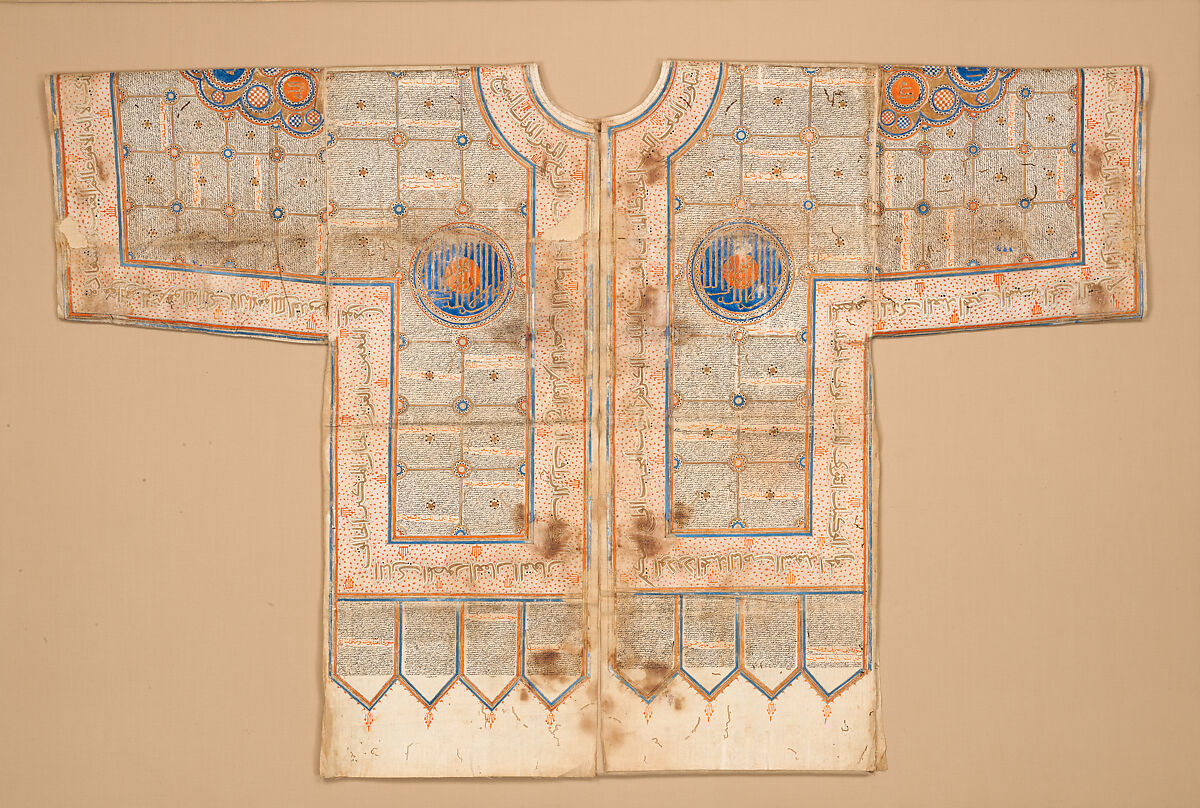The talismanic shirt is a special type of garment, particularly worn during the Ottoman period by sultans, members of the royal family, and high-ranking state officials. It was believed to hold religious, symbolic, and protective meanings. These shirts were inscribed with verses from the Qur’an, prayers, vefk (geometric talismanic symbols), and symbolic motifs. They were thought to be imbued with talismans that protected the wearer from unseen evils, dangers in battle, or illnesses.

Examples of ''Talismanic Shirts''. (TRT Haber)
Historical Background
The tradition of the talismanic shirt is regarded as a practice born from the fusion of shamanic elements in Central Asian Turkic culture and Islamic beliefs. Although traces of this tradition can be observed from the Seljuk period, it acquired an institutional character within the Ottoman court starting from the 15th century. These garments were particularly produced in the Nakkaşhane (Imperial Design Studio) within the Topkapı Palace. Talismanic shirts were typically worn before major battles, during enthronement ceremonies, or on special religious occasions.
Structural Features
Talismanic shirts were made from linen, silk, or cotton fabrics. Onto these garments, skilled calligraphers inscribed Qur’anic verses, the Asma’ al-Husna (the Beautiful Names of God), prayers, the battle supplications of Ali, various vefks (talismanic charts), symbols, and star maps. The motifs embroidered on the shirts were not merely decorative; each element carried symbolic significance. For example, talismans placed over the chest were believed to protect the heart, while inscriptions on the back were thought to shield against attacks from enemies. These texts and symbols were arranged according to specific astronomical and numerological calculations.
Purposes of Use and Beliefs
Talismanic shirts were regarded not merely as garments but as spiritual shields. When ascending the throne, sultans wore these shirts to symbolically demonstrate that they were divinely appointed and to affirm their belief in the protective power of the prayers inscribed upon them. Similarly, when worn before battles, these shirts were believed to bolster the morale of military leaders. It was thought that the talismans could positively influence a person’s fate, ward off illnesses, and protect against the evil eye.
Artistic and Aesthetic Aspects
These shirts also required remarkable artistic craftsmanship. The inscriptions were written with the refined techniques of Islamic calligraphy and adorned with elements of tezhip (illumination) and miniature art. Each shirt was considered a unique and singular work of art. The talismans embroidered onto the fabric reflect a vast intellectual and symbolic universe, ranging from the mystical meanings of Arabic letters to the realms of Islamic cosmology.

Drawing of a ''Talismanic Shirt''. (The Met)
Contemporary Status
The most well-known examples of talismanic shirts are currently exhibited in the collection of the Topkapı Palace Museum. These garments are considered significant historical artifacts, contributing to the understanding of both Islamic art and the socio-cultural fabric of the Ottoman Empire. Today, the shirts are preserved using modern restoration techniques, and the inscriptions and symbols they bear continue to be subjects of academic research.


